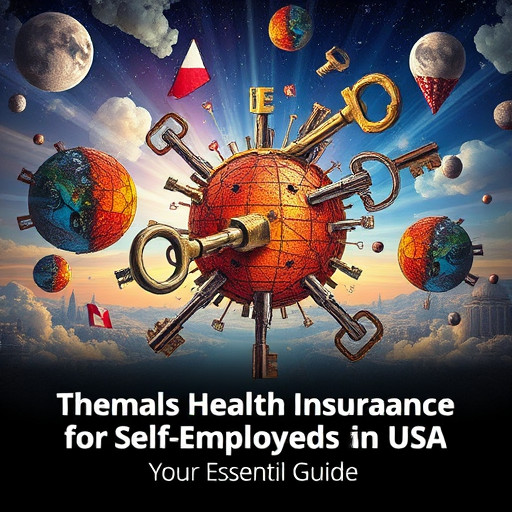The Cost of Auto Insurance – What Influences Your Premium?

Understanding the factors that shape The Cost of Auto Insurance: What Influences Your Premium? is essential for anyone seeking to navigate the often complex world of vehicle insurance. From your driving history to the type of vehicle you drive, numerous elements play a pivotal role in determining how much you will pay for coverage.
Who Influences The Cost of Auto Insurance?
Before delving into the specifics of auto insurance premiums, it’s crucial to understand who or what plays a role in influencing these costs. Various stakeholders contribute to the pricing model used by insurers.
Insurance Companies and Their Underwriting Process
Insurance companies have their unique underwriting processes which assess risk based on a multitude of factors. This process involves evaluating data from numerous sources, including:
- Your Driving Record: A clean driving record with no accidents or violations can significantly lower your premium. Conversely, a history of accidents or traffic violations often results in higher rates.
- Credit Score: In many states, insurers examine credit scores as part of determining premiums. A good credit score typically leads to more favorable rates, reflecting the insurer’s view that responsible individuals are less likely to file claims.
- Claims History: If you have made multiple claims in the past, this could indicate a higher risk level. Insurers may charge higher premiums for those perceived as likely to make future claims.
State Regulations and Laws
Each state has its regulations affecting auto insurance pricing. These laws can dictate minimum coverage requirements and govern how insurance companies can use certain information. For example:
- No-Fault States: In no-fault states, drivers carry personal injury protection (PIP) insurance, which can influence overall costs.
- Minimum Coverage Requirements: States have different mandates for liability coverage, which can affect the cost of policies. Higher required limits generally lead to increased premiums.
Market Competition and Economic Factors
The broader market environment also influences premiums. Economic conditions, competition among providers, and consumer demand can all impact pricing strategies. In a competitive market, insurers may offer lower rates to attract customers, while economic downturns might lead to price increases.
How to Understand The Cost of Auto Insurance?
Understanding The Cost of Auto Insurance: What Influences Your Premium? requires attention to various elements that come into play when calculating insurance premiums.
Risk Factors and Their Impact on Costs
Different risk factors come into play that directly affects your premium. Some of the most significant include:
- Age and Gender: Statistically, young drivers and male drivers are considered higher risk. Consequently, younger individuals typically face higher premiums compared to older, more experienced drivers.
- Geographical Location: Where you live can greatly influence your premium. Urban areas with higher crime rates and greater traffic congestion tend to have higher premiums than rural locations.
- Vehicle Type: The make and model of your car can drastically change your insurance premium. Vehicles that are more expensive to repair or those that are popular among thieves may incur higher rates.
Personal Choices Impacting Insurance Costs
https://www.profitablecpmrate.com/dexuw7mhmv?key=6503b2f78ec4209747696c3d01ba1d23
Beyond inherent risk factors, personal choices also shape your insurance experience:
- Coverage Options: Choosing comprehensive and collision coverage will raise your premium compared to opting for just liability insurance. It’s essential to assess your needs and adjust accordingly.
- Deductibles: Selecting a higher deductible reduces your premium but also means you’ll pay more out-of-pocket in the event of a claim. It’s vital to find a balance between affordability and acceptable risk.
- Discount Opportunities: Many insurance providers offer discounts for various reasons, such as bundling policies, completing defensive driving courses, or maintaining a low mileage. Exploring these opportunities can lead to significant savings.
Understanding Policy Terminology
To fully grasp The Cost of Auto Insurance: What Influences Your Premium?, becoming knowledgeable about policy terminology is key. Here are some important terms to familiarize yourself with:
- Liability Coverage: Covers damages to others if you are at fault in an accident. Understanding the limits is crucial for adequate protection.
- Collision and Comprehensive Coverage: Collision covers damage to your car from accidents, while comprehensive covers non-collision-related incidents, like theft or natural disasters.
- Uninsured/Underinsured Motorist Coverage: Protects you in situations where the at-fault party lacks adequate insurance. This is particularly important given the number of uninsured drivers on the road.
Pros and Cons of The Cost of Auto Insurance
Every financial decision comes with its own set of advantages and disadvantages. When it comes to understanding The Cost of Auto Insurance: What Influences Your Premium?, weighing the pros and cons can help you make informed decisions.
Advantages of Having Auto Insurance
Auto insurance provides several benefits that go beyond merely fulfilling legal obligations. Here are a few notable advantages:
- Financial Protection: The primary advantage of auto insurance is protection against financial loss due to accidents, theft, or other unforeseen events. It acts as a safety net, preventing devastating financial consequences.
- Peace of Mind: Knowing you are covered in case of an accident can alleviate stress. This peace of mind allows drivers to focus on the road rather than worrying about potential financial ramifications.
- Legal Requirement: In many places, having some form of auto insurance is mandatory. By complying with local laws, drivers avoid penalties and potential legal issues.
Disadvantages of Auto Insurance
On the flip side, there are drawbacks associated with auto insurance that should be considered:
- Cost: For many, the most significant disadvantage is the expense. Monthly premiums can add up quickly, impacting overall financial health.
- Complexity: Navigating the technical jargon and variety of options available can be confusing. This complexity may lead to poor policy choices if not adequately understood.
- Potential Gaps in Coverage: Depending on the policy chosen, there could be gaps that leave drivers vulnerable. Not fully understanding what is covered can lead to unwelcome surprises during a claim process.
Balancing Coverage Needs
When considering the pros and cons of auto insurance, it’s essential to strike a balance between necessary coverage and affordability. By analyzing individual circumstances, such as driving habits, vehicle type, and financial situation, drivers can find a suitable balance that meets both protective and budgetary needs.
Alternatives to Traditional Auto Insurance
While traditional auto insurance is often the route most drivers take, it’s worth exploring alternatives that may suit your needs better. Understanding The Cost of Auto Insurance: What Influences Your Premium? can also lead you toward different solutions.
Pay-Per-Mile Insurance
For infrequent drivers, pay-per-mile insurance can significantly reduce costs. This approach charges drivers based on the miles they drive, making it ideal for those who only take their vehicles out occasionally.
- How It Works: Typically, you pay a base rate plus a fee for every mile driven. This structure suits those who do not commute frequently and want to save on premiums.
- Who It Benefits: Individuals working from home or those living in urban areas who rely on public transport may benefit considerably from this option.
Usage-Based Insurance Programs
Many insurers now offer usage-based insurance programs that utilize telematics devices to monitor driving behaviors.
- Data Collection: These devices collect information about your driving habits, including speed, braking patterns, and acceleration. Good driving behavior can lead to substantial discounts.
- Real-Time Feedback: Drivers receive real-time feedback on their driving habits, allowing them to improve and potentially qualify for lower rates over time.
Self-Insurance
Self-insuring entails setting aside funds to cover potential damages instead of paying for traditional insurance.
- Financial Considerations: This option is viable for individuals with sufficient savings who can afford to cover costs associated with potential accidents or vehicle damage.
- Risks: However, self-insurance carries significant risks, especially if a major accident occurs. Adequate analysis and planning are crucial before pursuing this avenue.
Step-by-step Guide to Evaluating The Cost of Auto Insurance
Navigating through The Cost of Auto Insurance: What Influences Your Premium? can feel overwhelming, but breaking it down step-by-step can simplify the process.
Assess Your Coverage Needs
Begin by evaluating your personal needs based on factors such as:
- Driving Frequency: How often do you drive?
- Vehicle Value: Is your car new or old?
- Financial Situation: Can you afford higher deductibles or would lower premiums serve you better?
These considerations will guide you in selecting appropriate coverage levels.
Research Different Insurance Providers
Take the time to explore various insurers and their offerings:
- Reputation and Reviews: Websites that aggregate customer reviews can provide insight into a provider’s reliability and service quality.
- Comparison Tools: Utilize online comparison tools to evaluate quotes across different companies, ensuring you obtain the best possible deal.
Analyze Discounts and Incentives
Most insurance companies offer various discounts. Look for opportunities such as:
- Multi-Policy Discounts: Bundling auto insurance with other insurance types (like homeowners) can yield savings.
- Safe Driver Discounts: Policies encouraging safe driving through discounts promote responsible behavior and can reduce costs.
Review and Finalize Your Policy
After gathering information and quotes, compare and review:
- Policy Details: Scrutinize the coverage options, exclusions, and limitations before finalizing your choice.
- Customer Service: Evaluate the responsiveness and support provided by each company to ensure a positive experience should you need to file a claim.
Tips for Reducing The Cost of Auto Insurance
Reducing The Cost of Auto Insurance: What Influences Your Premium? involves strategic steps that can lead to considerable savings without sacrificing necessary coverage.
Maintain a Clean Driving Record
A clean driving record is one of the most effective ways to lower your premium. By avoiding accidents and traffic violations, you send a positive signal to insurers regarding your risk profile.
Shop Around Regularly
Periodically reviewing insurance policies ensures you’re not overpaying. Rates can fluctuate year-to-year, and providers often have promotional offers that can lead to savings.
Take Advantage of Discounts
Be proactive in seeking out discounts offered by your insurer. Ask if you qualify for any available programs or incentives, as these can dramatically impact your overall premium.
Consider Group Insurance Plans
If you belong to an organization or workplace that offers group insurance plans, consider enrolling. Group rates can be more affordable compared to individual plans.
Frequently Asked Questions
What is the average cost of auto insurance?
The average cost varies widely based on location, driver history, vehicle type, and coverage levels. It’s essential to obtain personalized quotes for the best estimate.
How does my credit score affect my premium?
Insurers often use credit scores as an indicator of risk. A better credit score generally correlates with lower premiums, as it reflects responsible financial behavior.
Can I change my insurance policy anytime?
Yes, you can modify your policy whenever needed. However, be mindful of timing, as changes can affect your current premium and coverage.
What should I do after an accident regarding my insurance?
After an accident, report it to your insurer promptly. Document the details, gather witness statements, and don’t admit fault—this information will be crucial during the claims process.
Are there insurance options specifically for high-risk drivers?
Yes, high-risk drivers may seek specialized insurers that cater to their needs. While premiums might be higher, these providers often offer tailored solutions.
Conclusion
In conclusion, understanding The Cost of Auto Insurance: What Influences Your Premium? is fundamental for making informed decisions regarding your coverage. By exploring various factors—from your driving record and vehicle type to market dynamics—you empower yourself to find the best insurance solution for your needs. Whether you’re interested in traditional insurance models or alternative strategies, being proactive and knowledgeable about your options can lead to significant savings while ensuring you remain protected on the road.



Leave a Comment